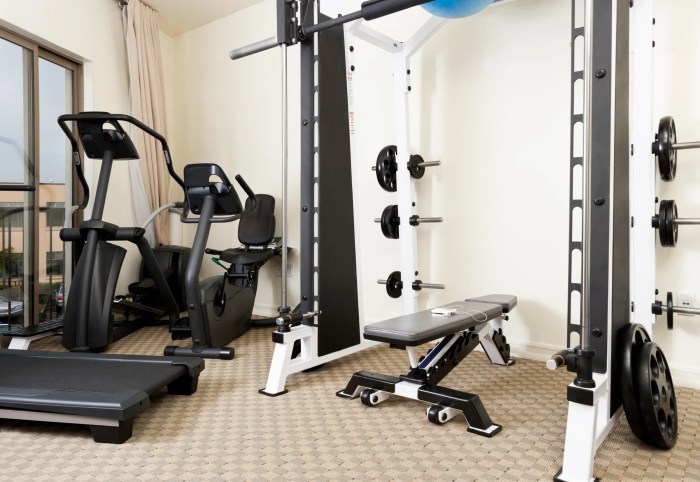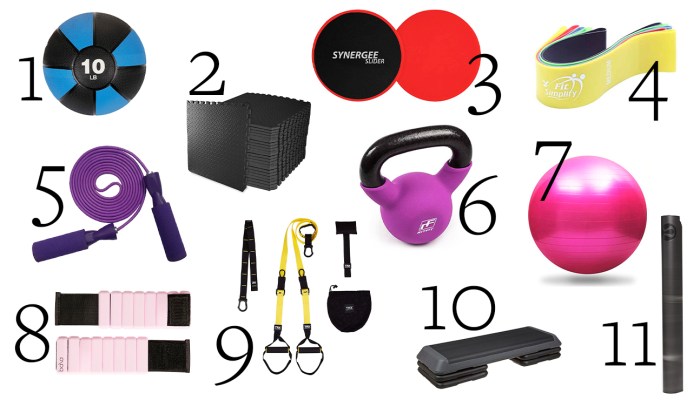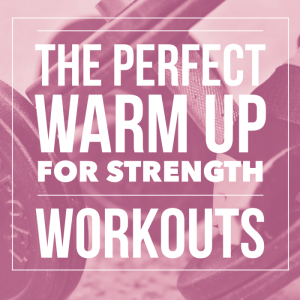
Transforming your living room into a fully functional gym can be an empowering move, opening doors to a healthier lifestyle without the need for expensive memberships or crowded fitness centers. Building a home gym offers unparalleled convenience, allowing you to exercise on your own terms, at your own pace, and in the comfort of your own space.
This guide delves into the essential equipment you need to create a home gym that caters to both strength training and cardio workouts. We’ll explore the benefits of different types of equipment, provide tips for safe and effective use, and even offer ideas for organizing your new fitness haven. Whether you’re a seasoned athlete or just starting your fitness journey, this comprehensive guide will equip you with the knowledge and tools to achieve your fitness goals right at home.
Essential Gym Equipment for a Home Workout
Having a home gym setup offers several advantages, including convenience, cost-effectiveness, and the ability to exercise at your own pace. You can save time and money by avoiding gym memberships, and you can customize your workout routine to fit your individual needs and goals.
Essential Equipment for a Full-Body Workout
Having a home gym doesn’t require a large space or a lot of equipment. You can achieve a full-body workout with just a few essential items.
- Dumbbells: Dumbbells are versatile and can be used for a wide range of exercises, including bicep curls, shoulder presses, and squats. Choose a set of dumbbells with varying weights to challenge yourself as you progress.
- Barbell: A barbell is a great addition for exercises like squats, deadlifts, and bench presses. A barbell allows you to lift heavier weights than dumbbells, which can help you build strength and muscle mass.
- Resistance Bands: Resistance bands are lightweight and portable, making them ideal for home workouts. They provide resistance for a variety of exercises, including rows, chest presses, and leg extensions.
- Pull-up Bar: A pull-up bar is essential for building upper body strength and improving grip strength. You can install a pull-up bar in your doorway or purchase a freestanding model.
- Yoga Mat: A yoga mat provides cushioning and support for exercises like yoga, Pilates, and floor exercises. Choose a mat that is thick enough to provide comfort and support.
- Exercise Ball: An exercise ball is a great tool for improving core strength and balance. It can be used for a variety of exercises, including crunches, planks, and leg raises.
Proper Form and Technique
Proper form and technique are crucial for maximizing results and preventing injuries. It’s important to learn the correct form for each exercise before attempting it with weights.
- Dumbbell Exercises: When using dumbbells, maintain a neutral spine and avoid arching your back. Keep your core engaged throughout the exercise.
- Barbell Exercises: When using a barbell, it’s essential to use a spotter for safety. Keep your core engaged and maintain a neutral spine.
- Resistance Band Exercises: Use resistance bands with proper tension to avoid strain. Keep your core engaged and maintain a controlled movement throughout the exercise.
- Pull-up Bar Exercises: Ensure a secure grip on the pull-up bar and maintain a straight line from your head to your heels.
- Yoga Mat Exercises: Keep your core engaged and maintain proper alignment throughout yoga and Pilates exercises.
- Exercise Ball Exercises: Ensure a stable base on the exercise ball and maintain a neutral spine.
Safety Tips
Safety is paramount when working out at home. Here are some tips for using equipment safely:
- Warm up before each workout: Warming up helps prepare your muscles for exercise and reduces the risk of injury.
- Start with lighter weights: Gradually increase the weight as you get stronger.
- Use proper form: Proper form is essential for preventing injuries.
- Listen to your body: If you experience any pain, stop the exercise and rest.
- Stay hydrated: Drink plenty of water before, during, and after your workout.
Cardio Equipment
Cardiovascular exercise is crucial for overall health and fitness, and having cardio equipment at home can make it more convenient and accessible. There are several different types of cardio equipment available, each with its own benefits and drawbacks. Here’s a breakdown of some popular options to help you decide which is best for your needs.
Types of Cardio Equipment
Cardio equipment offers a variety of ways to get your heart rate up and burn calories. Here’s a comparison of some of the most popular options:
Treadmills
Treadmills are a versatile and effective cardio machine that simulates outdoor running. They offer a range of features, including incline adjustments, pre-programmed workouts, and heart rate monitoring.
Ellipticals
Ellipticals provide a low-impact, full-body workout that engages both the upper and lower body. They offer a smooth, fluid motion that is easy on the joints, making them a good option for people with knee or back pain.
Stationary Bikes
Stationary bikes offer a low-impact, targeted workout that primarily focuses on the lower body. They are a good option for people who want to improve their cardiovascular fitness without putting a lot of stress on their joints.
Benefits and Drawbacks of Cardio Equipment
- Treadmills:
- Benefits:
- Effective for burning calories and improving cardiovascular fitness.
- Offers a range of features, including incline adjustments, pre-programmed workouts, and heart rate monitoring.
- Provides a more natural running motion than other cardio machines.
- Drawbacks:
- Can be expensive.
- Takes up a significant amount of space.
- Can be noisy.
- Benefits:
- Ellipticals:
- Benefits:
- Low-impact, full-body workout that is easy on the joints.
- Engages both the upper and lower body.
- Offers a variety of resistance levels.
- Drawbacks:
- Can be expensive.
- Takes up a significant amount of space.
- May not be as effective for burning calories as running on a treadmill.
- Benefits:
- Stationary Bikes:
- Benefits:
- Low-impact, targeted workout that primarily focuses on the lower body.
- Good option for people with knee or back pain.
- Relatively affordable.
- Drawbacks:
- May not be as engaging as other cardio machines.
- May not be as effective for burning calories as running or elliptical training.
- Benefits:
Cardio Machine Comparison
| Feature | Treadmill | Elliptical | Stationary Bike |
|---|---|---|---|
| Price | $$-$$$ | $$-$$$ | $-$$ |
| Space Required | Large | Large | Medium |
| Impact | High | Low | Low |
| Muscle Engagement | Lower body | Full body | Lower body |
| Workout Variety | High | Medium | Low |
| Pros | Effective for burning calories, natural running motion, variety of features | Low-impact, full-body workout, easy on the joints | Low-impact, affordable, good for targeting lower body |
| Cons | Expensive, takes up space, can be noisy | Expensive, takes up space, may not be as effective for calorie burning | May not be as engaging, may not be as effective for calorie burning |
Strength Training Equipment
Strength training equipment is an essential part of a home gym setup. It allows you to build muscle, increase strength, and improve overall fitness. The following are some essential pieces of strength training equipment for your home gym:
Dumbbells
Dumbbells are versatile and effective for a wide range of exercises. They can be used for both upper and lower body exercises. Some popular dumbbell exercises include:
- Bicep curls
- Triceps extensions
- Overhead press
- Lateral raises
- Lunges
- Rows
Barbells
Barbells are ideal for compound exercises that work multiple muscle groups simultaneously. They offer a greater challenge than dumbbells and allow you to lift heavier weights. Some common barbell exercises include:
- Squats
- Deadlifts
- Bench press
- Overhead press
- Barbell rows
Resistance Bands
Resistance bands are lightweight and portable, making them a great option for home workouts. They provide resistance throughout the range of motion, which can help to improve muscle activation and flexibility. Some resistance band exercises include:
- Bicep curls
- Triceps extensions
- Chest press
- Lateral raises
- Glute bridges
- Squats
Kettlebells
Kettlebells are unique weights that allow for a wide range of dynamic exercises. They are versatile and can be used for both strength training and cardio. Some popular kettlebell exercises include:
- Swings
- Snatches
- Clean and press
- Goblet squats
- Turkish get-ups
Sample Workout Routine
A balanced workout routine using strength training equipment should target all major muscle groups. Here is a sample workout routine:
Day 1: Upper Body
- Dumbbell bench press: 3 sets of 8-12 repetitions
- Dumbbell rows: 3 sets of 8-12 repetitions
- Dumbbell overhead press: 3 sets of 8-12 repetitions
- Dumbbell bicep curls: 3 sets of 10-15 repetitions
- Dumbbell triceps extensions: 3 sets of 10-15 repetitions
Day 2: Lower Body
- Barbell squats: 3 sets of 8-12 repetitions
- Barbell deadlifts: 3 sets of 5-8 repetitions
- Dumbbell lunges: 3 sets of 10-15 repetitions per leg
- Kettlebell swings: 3 sets of 15-20 repetitions
Day 3: Core
- Plank: 3 sets of 30-60 seconds
- Crunches: 3 sets of 15-20 repetitions
- Russian twists: 3 sets of 15-20 repetitions
- Leg raises: 3 sets of 15-20 repetitions
Remember to warm up before each workout and cool down afterwards. You can adjust the weight, sets, and repetitions based on your fitness level and goals.
Workout Routines and Programs
Creating a workout routine is essential for maximizing your home gym setup. It provides structure, ensures you target all muscle groups, and helps you track your progress. A well-designed routine should incorporate different types of exercises and equipment to challenge your body and prevent plateaus.
Sample Workout Routines
Here are sample workout routines for beginners and intermediate fitness levels, demonstrating how to incorporate different types of equipment into a workout program.
Beginner Workout Routine
This routine focuses on compound movements that engage multiple muscle groups, using bodyweight and basic equipment like dumbbells and resistance bands.
- Warm-up: 5 minutes of light cardio, such as jumping jacks or jogging in place.
- Workout:
- Squats (3 sets of 10-12 repetitions)
- Push-ups (3 sets of as many repetitions as possible)
- Dumbbell rows (3 sets of 10-12 repetitions)
- Resistance band bicep curls (3 sets of 10-12 repetitions)
- Resistance band tricep extensions (3 sets of 10-12 repetitions)
- Cool-down: 5 minutes of stretching, focusing on major muscle groups.
Intermediate Workout Routine
This routine incorporates more challenging exercises and heavier weights. It utilizes a variety of equipment, including a barbell, dumbbells, and a pull-up bar.
- Warm-up: 10 minutes of dynamic stretching, such as arm circles, leg swings, and torso twists.
- Workout:
- Barbell back squats (3 sets of 8-10 repetitions)
- Overhead press (3 sets of 8-10 repetitions)
- Deadlifts (3 sets of 5-8 repetitions)
- Pull-ups (3 sets of as many repetitions as possible)
- Dumbbell lunges (3 sets of 10-12 repetitions per leg)
- Cool-down: 10 minutes of static stretching, holding each stretch for 30 seconds.
Tips for Staying Motivated and Consistent
Maintaining a home workout routine requires discipline and commitment. Here are some tips to help you stay motivated and consistent:
- Set realistic goals: Start with achievable goals and gradually increase the intensity and duration of your workouts as you progress.
- Find an accountability partner: Working out with a friend or family member can provide motivation and support.
- Schedule your workouts: Treat your workouts like important appointments and schedule them into your calendar.
- Vary your workouts: Mix up your routine to keep things interesting and prevent boredom.
- Track your progress: Keep a workout log or use a fitness tracker to monitor your progress and celebrate your achievements.
- Reward yourself: Give yourself a small reward for sticking to your workout routine, such as a new workout outfit or a relaxing massage.
Food and Related Products

Proper nutrition plays a crucial role in supporting your fitness goals. It fuels your workouts, aids in muscle recovery, and contributes to overall well-being. By understanding the importance of nutrition and making informed food choices, you can optimize your fitness journey.
Healthy Foods to Fuel Workouts
Eating a balanced diet rich in essential nutrients is crucial for optimal workout performance and recovery. Here are some healthy foods that can provide the energy and nutrients your body needs:
- Complex Carbohydrates: These provide sustained energy throughout your workout. Examples include brown rice, quinoa, whole-wheat bread, and oats.
- Lean Protein: Protein is essential for muscle growth and repair. Include sources like chicken breast, fish, tofu, and beans in your diet.
- Healthy Fats: Healthy fats provide energy and support hormone production. Opt for sources like avocados, nuts, and olive oil.
- Fruits and Vegetables: These are packed with vitamins, minerals, and antioxidants that support overall health and recovery.
Pre-Workout Meals and Snacks
Eating a balanced pre-workout meal or snack can provide the energy your body needs to power through your workout.
- Oatmeal with Berries and Nuts: This provides complex carbohydrates, protein, and healthy fats for sustained energy.
- Greek Yogurt with Fruit and Granola: This offers protein, calcium, and carbohydrates for a balanced pre-workout snack.
- Banana with Peanut Butter: This combination provides carbohydrates, protein, and potassium, which is essential for muscle function.
Post-Workout Meals and Snacks
After a workout, your body needs to replenish its energy stores and repair muscle tissue. Here are some post-workout meal and snack options:
- Chicken Breast with Brown Rice and Veggies: This provides protein, carbohydrates, and essential nutrients for muscle recovery.
- Tuna Salad with Whole-Wheat Crackers: This offers protein and healthy fats for post-workout recovery.
- Smoothie with Protein Powder, Fruit, and Spinach: This is a convenient and nutritious option for post-workout recovery.
Bed and Breakfast Inns

Bed and breakfast inns offer a unique and charming alternative to traditional hotels, particularly for fitness enthusiasts seeking a tranquil and personalized experience. They often provide a more intimate setting, allowing guests to connect with local communities and immerse themselves in the destination’s culture.
Benefits of Staying at a Bed and Breakfast Inn for Fitness Vacations
Staying at a bed and breakfast inn can be a great option for fitness vacations, as it offers a unique blend of comfort, convenience, and personalized service.
- Personalized Attention: Bed and breakfast inns typically provide personalized attention and service, ensuring that guests feel welcome and catered to. Innkeepers often have a deep knowledge of the local area and can provide recommendations for fitness activities, trails, and nearby gyms.
- Healthy and Delicious Breakfasts: Many bed and breakfast inns offer delicious and healthy breakfasts, often featuring locally sourced ingredients. These breakfasts can provide the energy and nutrients needed for a day of fitness activities.
- Tranquil and Relaxing Atmosphere: Bed and breakfast inns often have a tranquil and relaxing atmosphere, providing a peaceful retreat after a day of exercise. They often feature beautiful gardens, cozy common areas, and quiet rooms, fostering a sense of well-being.
- Access to Local Trails and Outdoor Activities: Many bed and breakfast inns are located in scenic areas with easy access to trails, parks, and other outdoor activities. This provides guests with convenient opportunities for hiking, running, cycling, and other fitness activities.
- Opportunity to Connect with Local Communities: Staying at a bed and breakfast inn can offer a unique opportunity to connect with local communities. Innkeepers often have strong ties to the area and can introduce guests to local fitness studios, yoga classes, or other fitness-related events.
Finding Fitness-Friendly Bed and Breakfast Inns
When searching for a fitness-friendly bed and breakfast inn, consider the following tips:
- Look for Inns with Fitness Amenities: Some bed and breakfast inns offer fitness amenities such as treadmills, ellipticals, or weight machines. Others may have partnerships with local gyms or fitness studios, providing guests with access to a wider range of fitness options.
- Check for On-Site Trails or Access to Nearby Parks: Look for inns that are located near trails, parks, or other outdoor spaces that offer opportunities for hiking, running, cycling, or other fitness activities.
- Read Reviews and Check for Fitness-Related Mentions: Look for reviews that mention fitness amenities, nearby trails, or the inn’s proximity to fitness studios or gyms. This can provide valuable insights into the fitness-friendliness of a particular inn.
- Contact the Inn Directly: Don’t hesitate to contact the inn directly to inquire about their fitness amenities, nearby trails, or partnerships with local fitness facilities. Innkeepers are often happy to provide personalized recommendations and information.
Cooking and Culinary
Fueling your body with nutritious food is just as important as your workouts. A balanced diet can enhance your performance, aid in muscle recovery, and support your overall health. Cooking at home gives you control over ingredients and allows you to make healthier choices.
Healthy Cooking Tips
Preparing nutritious meals and snacks can be simple and enjoyable. Here are some helpful tips:
- Plan ahead: Dedicate some time each week to meal planning. This helps you avoid impulsive unhealthy choices and ensures you have all the ingredients you need.
- Cook in bulk: Double or triple your recipes and freeze portions for later. This saves time and reduces the temptation to order takeout.
- Choose whole foods: Focus on fruits, vegetables, lean proteins, and whole grains. These foods are nutrient-rich and provide sustained energy.
- Read labels: Pay attention to serving sizes, calories, and added sugars. Look for products with low sodium and minimal processed ingredients.
- Use healthy cooking methods: Grilling, baking, steaming, and stir-frying are healthier alternatives to frying.
- Experiment with spices: Herbs and spices add flavor without extra calories or sodium. They can also boost your metabolism and reduce inflammation.
- Stay hydrated: Drink plenty of water throughout the day. Water is essential for muscle function, temperature regulation, and overall health.
Healthy Recipe Examples
Here are some examples of healthy recipes that are easy to prepare and delicious:
- Grilled Salmon with Roasted Vegetables: Season salmon with salt, pepper, and lemon juice. Roast vegetables like broccoli, carrots, and zucchini with olive oil and herbs.
- Chicken Stir-Fry: Slice chicken breast and stir-fry with your favorite vegetables, like bell peppers, onions, and broccoli. Serve over brown rice or quinoa.
- Quinoa Salad: Combine cooked quinoa with chopped cucumber, tomatoes, red onion, and a light vinaigrette.
- Smoothies: Blend fruits, vegetables, yogurt, and protein powder for a quick and nutritious meal or snack.
Creating a home gym is an investment in your well-being, providing a dedicated space for consistent exercise and promoting a healthier lifestyle. By understanding the benefits of different equipment, mastering proper form, and incorporating a balanced workout routine, you can maximize your home gym experience and achieve your fitness goals with ease. Remember, consistency is key, and your home gym is a powerful tool to support your fitness journey.
FAQs
What is the best cardio equipment for a home gym?
The best cardio equipment for your home gym depends on your fitness goals and preferences. Treadmills offer a classic running experience, ellipticals provide a low-impact workout, and stationary bikes are great for targeting your lower body.
How often should I use my home gym equipment?
Aim for at least 3-4 days of exercise per week, including both cardio and strength training sessions. You can adjust the frequency based on your fitness level and recovery needs.
How do I know if I’m using the equipment correctly?
It’s crucial to learn proper form and technique for each piece of equipment to avoid injuries. Consult online resources, fitness videos, or consider working with a personal trainer to ensure proper form.







